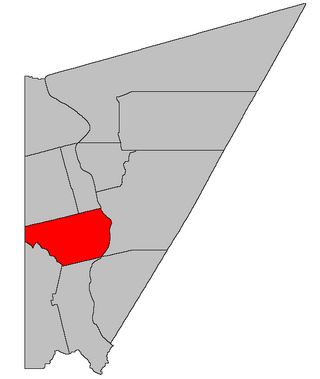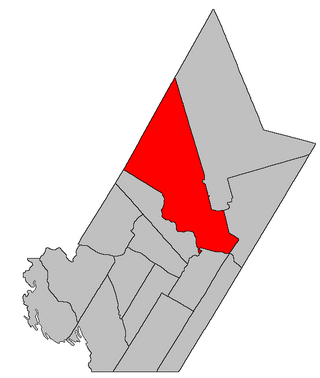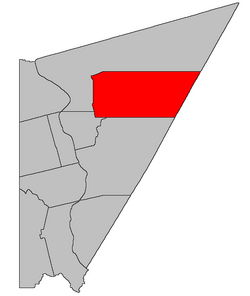
Inkerman is a geographic parish in Gloucester County, New Brunswick, Canada.

Northampton is a geographic parish in Carleton County, New Brunswick, Canada, sitting across the Saint John River from Woodstock.

Wicklow is a geographic parish in Carleton County, New Brunswick, Canada, forming the northwestern corner of Carleton County.

Perth is a geographic parish in Victoria County, New Brunswick, Canada.

Kent is a geographic parish in the northeastern corner of Carleton County, New Brunswick, Canada.

Peel is a geographic parish in Carleton County, New Brunswick, Canada, situated on the eastern bank of the Saint John River.

Simonds is a geographic parish in Carleton County, New Brunswick, Canada, located north of Woodstock on the western bank of the Saint John River.

Wilmot is a geographic parish in Carleton County, New Brunswick, Canada, located along the international border northwest of Woodstock.

Wakefield is a geographic parish in Carleton County, New Brunswick, Canada, located north on the west bank of the Saint John River north of Woodstock.

Brighton is a geographic parish in Carleton County, New Brunswick, Canada, northeast of Woodstock, extending from the eastern bank of the Saint John River to the York County line.

Woodstock is a geographic parish in Carleton County, New Brunswick, Canada, surrounding the town of the same name on its landward side.

Richmond is a geographic parish in Carleton County, New Brunswick, Canada, located west of Woodstock.

Douglas is a geographic parish in York County, New Brunswick, Canada.

Saint Marys is a geographic parish in York County, New Brunswick, Canada.

Stanley is a geographic parish in York County, New Brunswick, Canada.

Alma is a geographic parish on the Bay of Fundy in the southwestern corner of Albert County, New Brunswick, Canada.

Saint George is a geographic parish in Charlotte County, New Brunswick, Canada, located between St. Stephen and Saint John.

Saint Patrick is a geographic parish in Charlotte County, New Brunswick, Canada, located west of St. George and Saint Andrews.

Saint Stephen is a geographic parish in Charlotte County, New Brunswick, Canada, located in the southwestern corner of the province.

Saint James is a geographic parish in Charlotte County, New Brunswick, Canada, located north of St. Stephen.




















